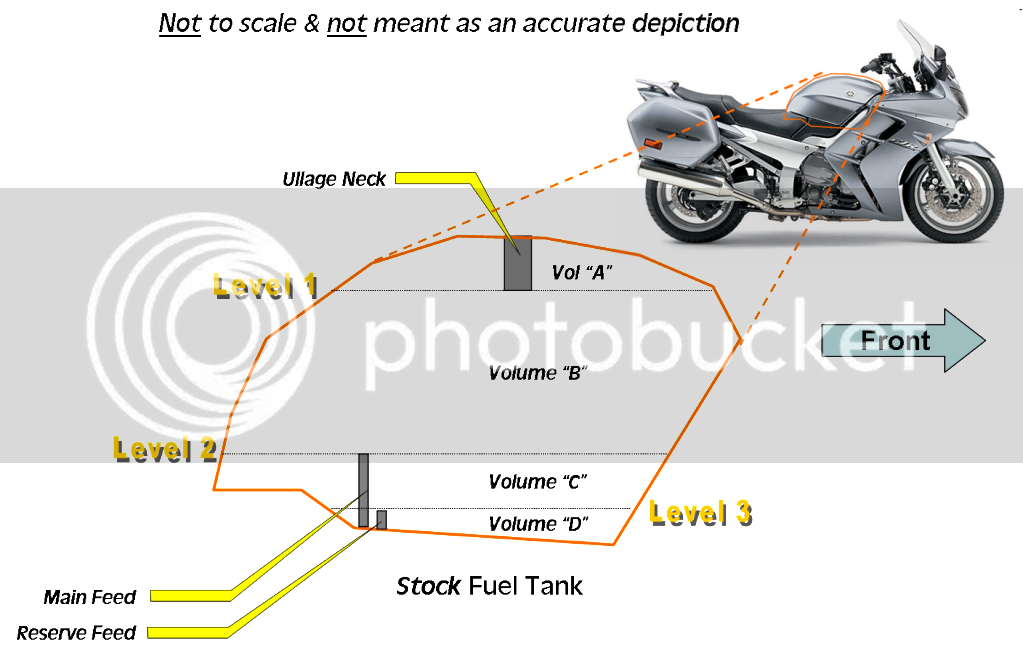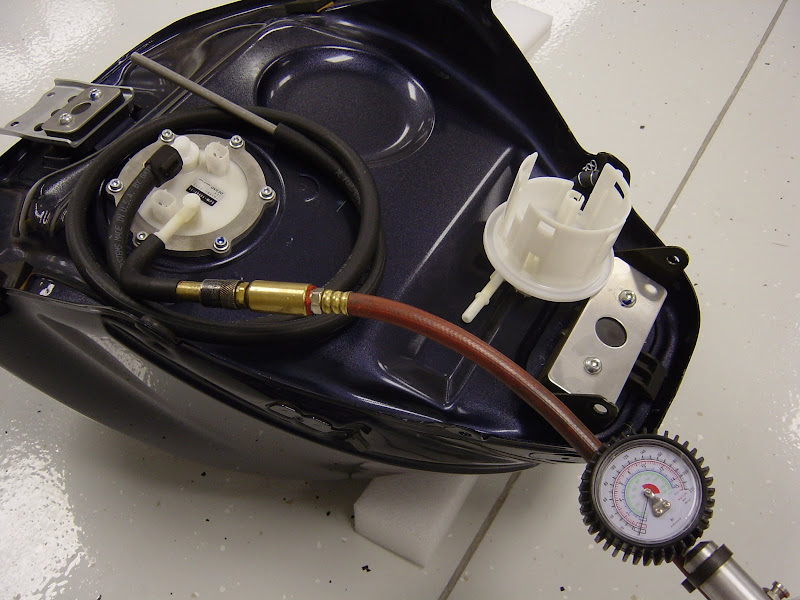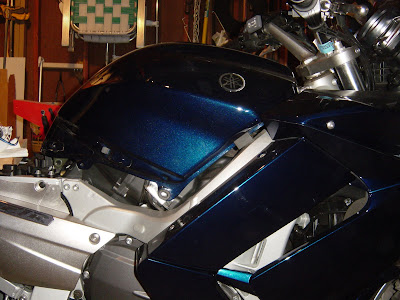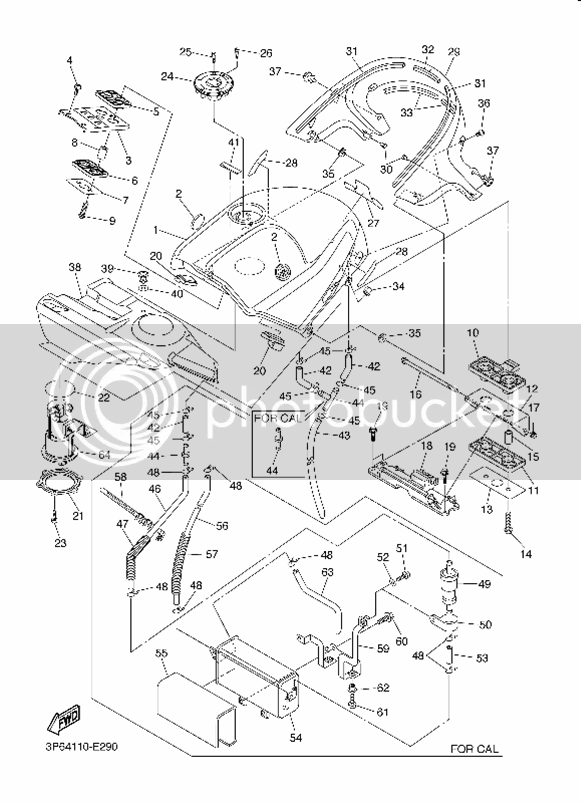Wee Willy
It's bad, you know
Here's some more data:

These represent all my fill ups since I bought the bike new in Mar 2009. The dark line through the data is a LSQ regression of all the data points. Some points of interest (to me anyway):
So what does all THIS mean? Is it just mental masturbation?
Well, the STD is useful. Says I can expect a variation in mpg from tank to tank of +/- 5.7 mpg based on driving conditions if I use a 2 sigma threshold. That takes me from a low of 33.6 mpg to a high of 45.0 mpg and captures the great majority of my data. I saw 45 mpg only a couple of times and it was all slab @ "cruiser" speeds: 65-70.
But I want to know where my "cliff" is. And I want to try and discover the amount of the 6.61 gallons that is trapped (if any) in MY tank and can't be easily used. I need to capture some additional data: miles on "F" at refill and take the bike once or twice into the death zone. These are now on my list of things to do.
Back with more when I get some data.
W2

These represent all my fill ups since I bought the bike new in Mar 2009. The dark line through the data is a LSQ regression of all the data points. Some points of interest (to me anyway):
- 83 data points, w/o sportos except the first fill at 150 miles & 5 gals (red circle @ 30 mpg). I suspect the ECU might run rich for the first few miles during break-in.
- The data is pretty well behaved after the first point and tends to an intercept very close to [0,0]...good news.
- There is some variance in mpg (x/y) but it's not bad: STD = 2.85 mpg
- Almost dead even split of points above and below the regression line--an indication of the low-skew nature of the underlying process...more good news
So what does all THIS mean? Is it just mental masturbation?
Well, the STD is useful. Says I can expect a variation in mpg from tank to tank of +/- 5.7 mpg based on driving conditions if I use a 2 sigma threshold. That takes me from a low of 33.6 mpg to a high of 45.0 mpg and captures the great majority of my data. I saw 45 mpg only a couple of times and it was all slab @ "cruiser" speeds: 65-70.
But I want to know where my "cliff" is. And I want to try and discover the amount of the 6.61 gallons that is trapped (if any) in MY tank and can't be easily used. I need to capture some additional data: miles on "F" at refill and take the bike once or twice into the death zone. These are now on my list of things to do.
Back with more when I get some data.
W2
Last edited by a moderator:


































































